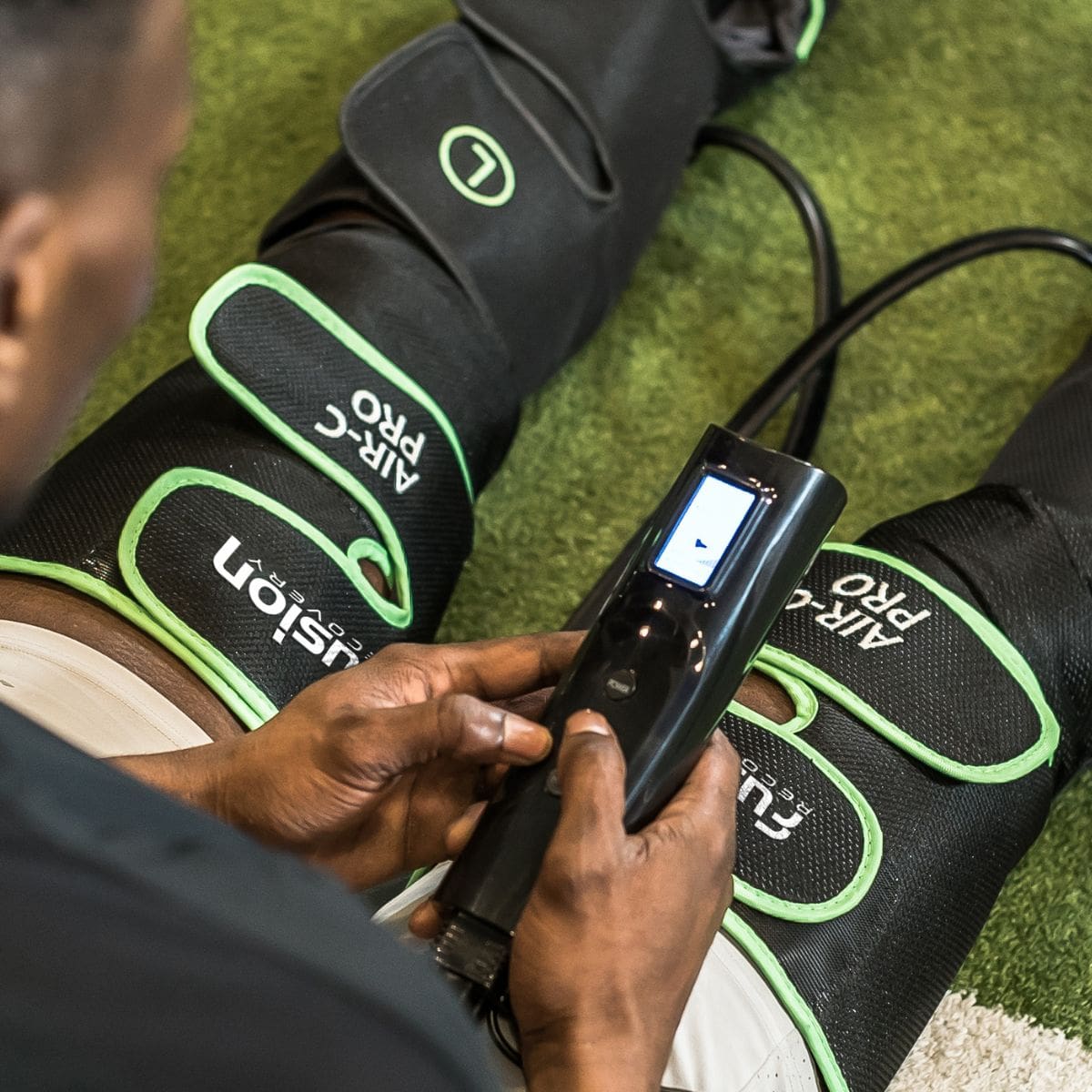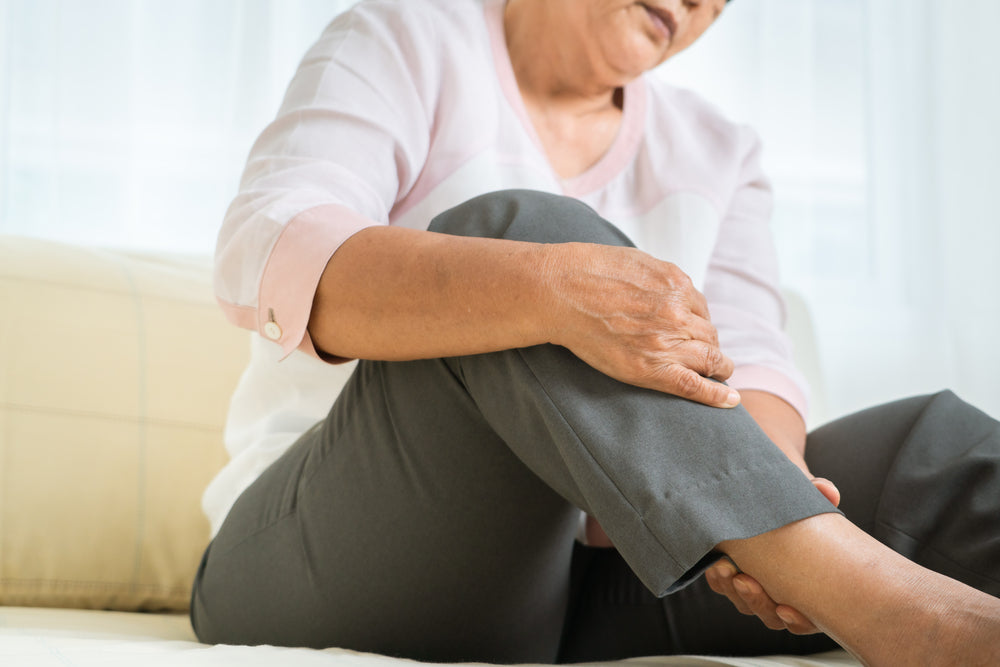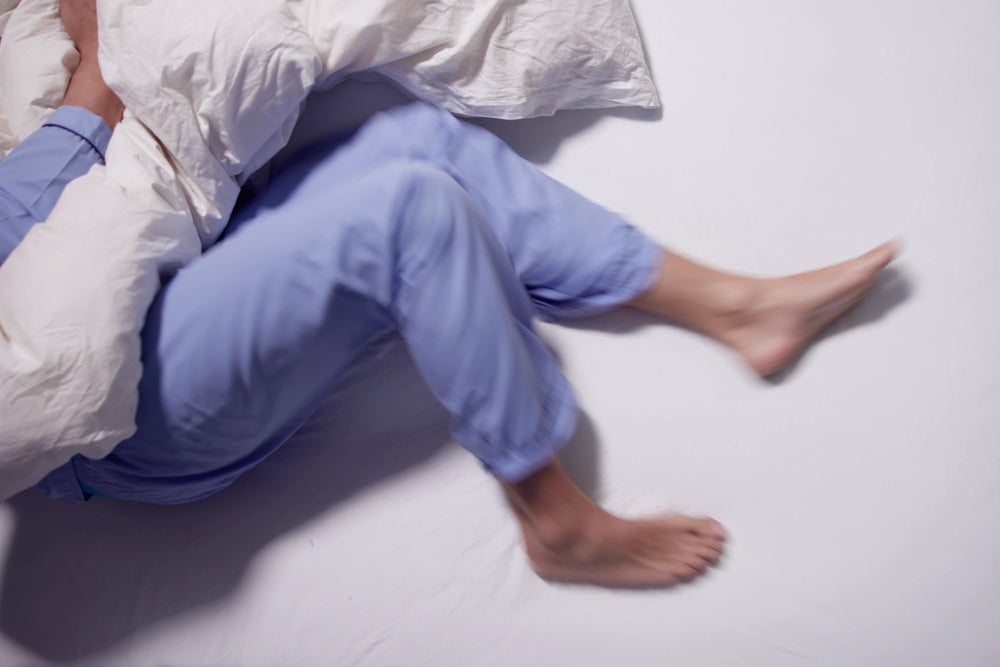Are you dealing with restless leg syndrome after knee replacement surgery but don't know how to find relief?
You're not alone.
Undergoing knee replacement surgery can be a safe and healthy way to alleviate pain and improve mobility for a better range of motion. This medical procedure is a common choice when dealing with arthritis, nerve pain, or injury.
But while knee replacement surgery can be beneficial for some, the recovery period often comes with a few drawbacks.
One clinical condition experienced by many post-surgeries is restless leg syndrome (RLS).
Also known as Willis-Ekbom disease, this neurological disorder occurs when patients feel an uncomfortable urge to move their legs. Symptoms can range from a tingling or itchy feeling to a deep ache, crawling, or creeping sensation.
Fortunately, there are a few strategies you can put in place to help reduce symptoms and find relief from RLS.
From lifestyle changes to dopaminergic drug medications and alternative therapies, read on to learn more about what you can do to treat RLS after knee replacement surgery.
Let's dive in.
Treating Restless Leg Syndrome After Knee Replacement Surgery
With a wide range of causes and symptom intensity, RLS can be difficult to manage.
However, there are several options you can use to help control symptoms and find relief.
Get a leg massage
Getting massage therapy can be incredibly beneficial for anyone dealing with RLS after knee replacement surgery.
Massage therapy helps reduce tension in your muscles, promoting relaxation and helping you feel more at ease. It also helps to stimulate blood flow and circulation, which can help alleviate pain.
While the thought of paying a visit to a professional massage therapist when finding relief from RLS can be intimidating for some, there are plenty of ways to find relief at home.
You can try using a foam roller, massage gun, or tennis ball to massage your legs and feet.
But perhaps the best way to get a massage is to invest in a leg massager. These fitness devices feature a series of air chambers that help stimulate your legs and feet through rhythmic pressure.
Take the Fusion Air C Pro, for example.
This soothing leg massager comes with a couple of leg sleeves that wrap around your legs to provide a comforting massage. With regular use, you can help reduce RLS symptoms and find relief.
Make use of warm or cool packs
For anyone looking to ease RLS after knee replacement surgery, applying a warm or cool pack can be incredibly effective.
Heat is known to relax your leg muscles and reduce tension, while cold helps to numb pain and reduce inflammation. To apply a hot or cold pack, simply place the pack where you feel pain for 15-20 minutes at a time.
Anything longer than this set time can be counterproductive and make your RLS symptoms worse.
You can also alternate between heat and cold if you find one more effective than the other. Whichever method you choose, make sure to wrap the pack in a towel before you apply it.
This will help protect your skin from any potential burns or damage.
Perform gentle stretching and strengthening exercises
Practicing stretching and strengthening exercises can be beneficial in managing RLS after undergoing surgery for a knee replacement.
Stretching helps to improve flexibility and range of motion, while strengthening exercises help to build strength and endurance. Both types of exercise can help reduce the severity of RLS symptoms by giving you better control of periodic limb movements.
A physical therapist can help you choose the right exercises to strengthen your leg muscles and alleviate uncomfortable RLS symptoms.
Gentle stretching exercises found to be effective in easing RLS after knee replacement include ankle circles, heel slides, hip bridges, and single-leg sit-to-stands. Other strengthening exercises you may want to try include squats, bridges, calf raises, and leg lifts.
Just make sure to start off slowly and gradually increase the intensity of your exercises as you get stronger.
Try acupuncture

Another effective method for patients dealing with restless leg syndrome after knee replacement surgery is to get acupuncture.
Acupuncture involves inserting thin needles in specific points on your body to target problematic areas and help relieve pain. The technique helps to regulate the flow of energy throughout your body, which can help ease RLS symptoms and improve your quality of life overall.
When using acupuncture for RLS after knee replacement surgery, a trained acupuncturist will insert thin needles into specific areas of your body. These needles will be left in different areas for a few minutes at a time, allowing the pressure points to relax and reduce knee pain.
If you decide to give acupuncture a try, make sure you find an experienced and licensed acupuncturist. And make sure to mention your RLS symptoms so they can tailor a treatment plan that works best for you.
Use supplements
Taking supplements can also be effective in combating restless leg syndrome after knee joint replacement surgery.
Supplements such as magnesium, iron tablets, and zinc are known to help ease RLS symptoms due to their ability to relax muscles and reduce tension. What's more, Vitamin D3 has been found to help promote restful sleep, which can further reduce the severity of your RLS symptoms.
When taking supplements for RLS after a knee replacement, make sure to follow the instructions on the bottle. This will help you ensure that any supplements you take are safe and won't interfere with any other medications you may be taking.
Take medications that boost dopamine levels
Last on our list of tips you can take to find relief from restless leg syndrome is taking medications that boost dopamine levels in your body.
Dopamine is a neurotransmitter that helps regulate movement and emotion, as well as create feelings of pleasure and reward. When there isn't enough dopamine in your system, it can lead to an exacerbation of symptoms.
To help combat these symptoms, physicians often recommend taking medications such as Mirapex or Requip. These dopamine agonists help to increase dopamine levels in your system, thus treating RLS and allowing you to live a more comfortable life.
So, there you have it – six ways to find relief from restless leg syndrome after undergoing surgery for knee replacement.
From investing in a leg massager to trying acupuncture, these methods can help bring you the comfort and relief you need.
All you have to do is take the first step toward finding a method that works best for you. To help you maximize your recovery, we'll delve into some lifestyle changes to try for fast relief.
Keep scrolling.
Making Lifestyle Changes to Treat Restless Legs After Knee Replacement Surgery
Any of the above treatments can provide some relief from RLS, but making lifestyle changes can also help you find faster and more effective relief.
Follow these steps, and you'll be well on your way to living an RLS-free life even after minor or major surgery:
Reduce your stress levels
A major step you can take to ensure quick relief from restless leg syndrome with minimal disruption is to reduce your body's stress levels.
High levels of stress can make the body more prone to muscle spasms and tension, which can lead to RLS flare-ups.
Just imagine putting your body through the stress of rigorous physical activity after undergoing surgery.
Now, that's not a risk you should take.
Take some time off to relax and let your body heal. This begins with avoiding strenuous exercise and any type of activity that could put additional strain on your legs. You can also practice relaxation techniques such as yoga, meditation, and breathing exercises to help bring your body into a more relaxed state.
Also, make sure to get plenty of rest.
Practice good sleep habits

If you're one to stay up late or have irregular sleep patterns, now is the time to make a change.
Good sleep habits are essential for managing restless legs syndrome, especially if you've just undergone surgery for a knee replacement.
Stick to a consistent sleep schedule, turn off the TV and any other electronics an hour before bedtime, and set up a comfortable environment. This will help your body slip into a more relaxed state, which can prevent RLS from flaring up.
Also, make sure to keep your bedroom cool and dark, as this has been proven to help patients find relief from RLS.
Follow a healthy diet
Next on our list of lifestyle changes you can make to manage relief from restless legs after knee replacement is to watch what you eat.
This is especially important if you have a history of low iron levels.
Low iron can be linked to RLS, so make sure you include plenty of iron-rich foods in your diet. Great sources of iron include lean red meat, poultry, fish, beans, and leafy green vegetables.
Also, try to reduce your intake of processed foods, saturated fats, and sugary snacks. These can all worsen RLS symptoms and make them more difficult to control.
Other nutrients like magnesium, folate, and Vitamin D can also be incorporated into your diet to help with RLS.
Limit caffeine, nicotine, and alcohol
Limiting caffeine, nicotine, and alcohol intake can go a long way toward helping you recover quickly from restless leg syndrome.
This can be especially helpful if you have just undergone knee surgery.
Caffeine is a stimulant and can increase RLS symptoms by inducing poor sleep quality and interfering with your body’s natural relaxation processes.
Instead of relying on coffee or energy drinks to get you through the day, replace them with healthier options like herbal tea, water, or juice. Nicotine is also linked to increased RLS symptoms and can make it more difficult for you to get a good night’s rest.
If you're a smoker, consider reducing your intake or quitting entirely. Alcohol can act as a depressant and interfere with your body's natural relaxation processes, so avoid drinking too much or too close to bedtime.
By sticking to these guidelines, you can ensure that your body gets the rest it needs.
Frequently Asked Questions
Still got questions on finding relief from restless leg syndrome after knee replacement surgery?
Here are some answers to help you out:
Why does restless leg syndrome occur after a knee replacement surgery?
Restless leg syndrome (RLS) can occur after knee replacement due to the stress that the surgery puts on your body.
The disruption of peripheral nerve pathways inside and around the knee joint can cause spasms, tension, and an overall feeling of restlessness in the legs. What's more, decreased blood flow in the affected area and changes in hormone levels can lead to severe symptoms of RLS.
Other contributing factors include sleep disorders, iron deficiency, and even certain medical conditions. Take peripheral neuropathy as an example, a common condition that affects the peripheral nervous system.
This can lead to increased nerve sensitivity and hyperactivity in the legs, thus contributing to RLS symptoms.
How can I tell if I have restless leg syndrome after a knee replacement surgery?
The most common symptom of restless leg syndrome (RLS) after knee replacement is an urge to move the legs.
This urge can be quite strong and often comes with a sensation of tightness, pain, or periodic limb movements. Other symptoms include difficulty sleeping due to an inability to get comfortable, fatigue from a lack of restful sleep, and aching or involuntary movements in the legs.
If you experience any of these symptoms, it's important to try any of the treatment methods and lifestyle changes mentioned in this blog post to help manage your symptoms.
How can I reduce the chance of developing restless leg syndrome after knee replacement surgery?
Yes, there are steps you can take to avoid dealing with restless leg syndrome symptoms after knee replacement surgery.
Perhaps the most important step is to run the necessary pre-surgery tests to ensure you're not dealing with any underlying medical conditions that could contribute to RLS. Other steps include following your doctor's instructions and adhering to a proper diet and rest schedule.
Taking supplements that contain nutrients like magnesium, folate, Vitamin D, and iron can also go a long way in helping to reduce the chances of developing RLS after knee replacement surgery.
When should one seek medical help for restless leg syndrome after knee replacement surgery?
While any of the treatment plans we've outlined here can help alleviate RLS, seeking medical attention if your condition worsens can help.
Patients usually find relief from their symptoms after a few weeks or months. If you notice that your symptoms are worsening or not responding to at-home treatment, it's important to speak with your healthcare provider right away.
They may be able to provide a more comprehensive treatment plan based on certain factors, like your medical history and current lifestyle.
Conclusion
Hope this post has provided you with some helpful information on how you can find relief from restless leg syndrome after a knee replacement.
Proven methods to find relief from this condition include performing light stretches and exercises, getting massage therapy, using warm or cold packs, and taking supplements that contain nutrients like magnesium and iron.
Whether you are going for surgery or have already undergone it, following any of these tips can help you find relief from RLS symptoms. Also, ensure to incorporate any of the lifestyle changes we have mentioned for optimal results.
This starts with getting enough rest after surgery, sticking to a healthy diet, and limiting your intake of caffeine and alcohol. Lastly, if your symptoms persist or worsen, make sure to seek medical help right away.
Now that you've got every piece of information you need on finding relief from restless leg syndrome after a knee replacement surgery, let us know how we can help you further.
Reach out to us for more expert advice on this condition or how our massage devices can make a whole world of difference in managing your condition.




